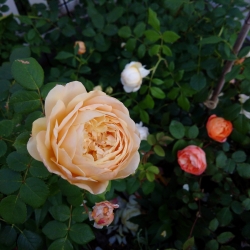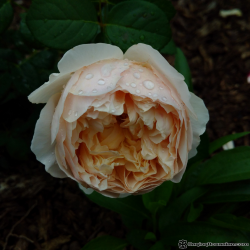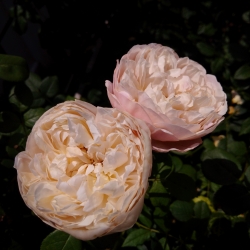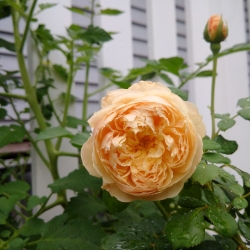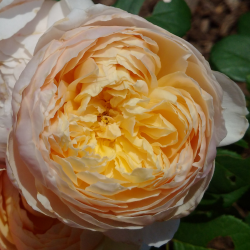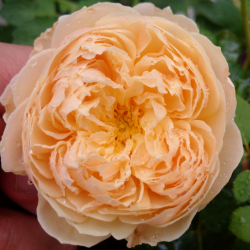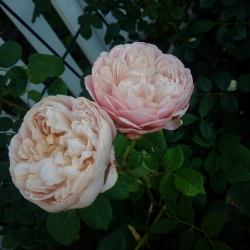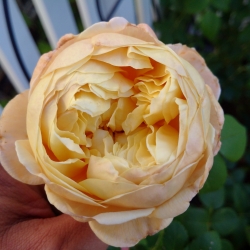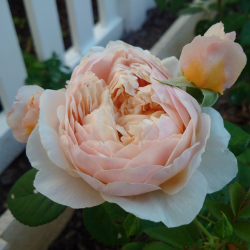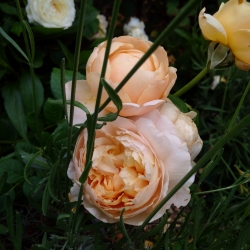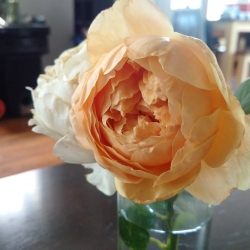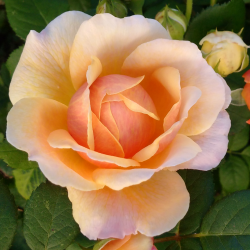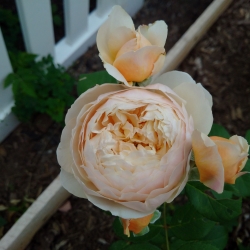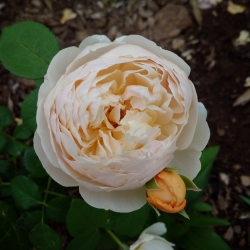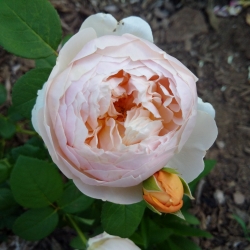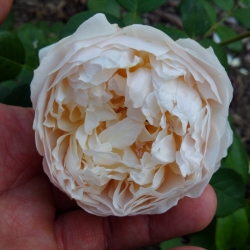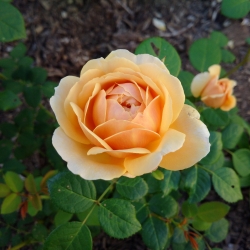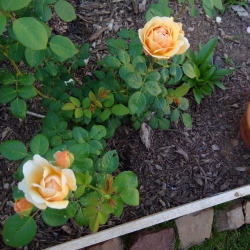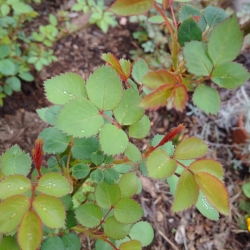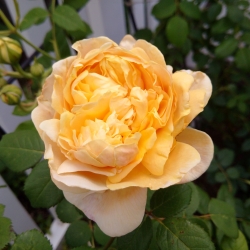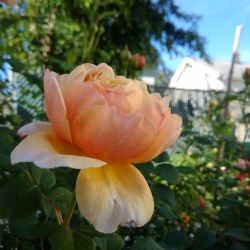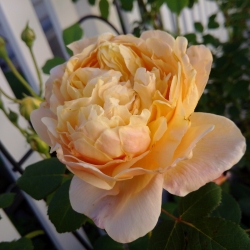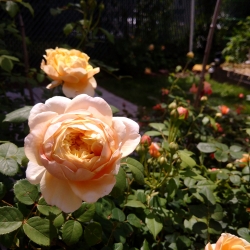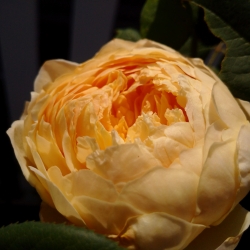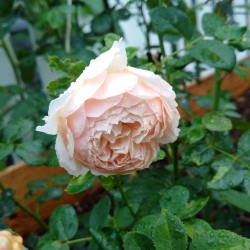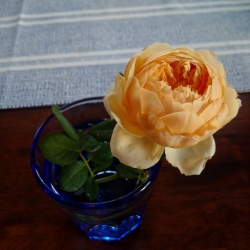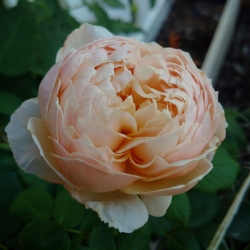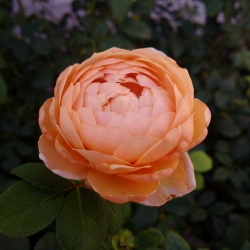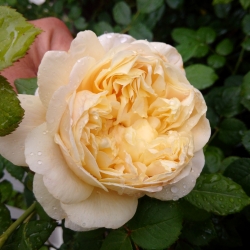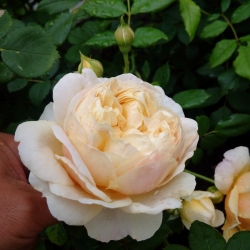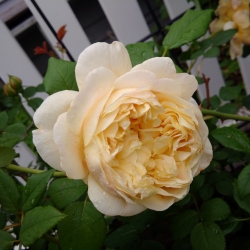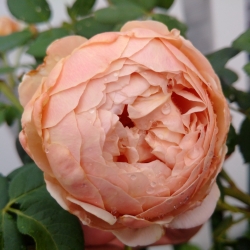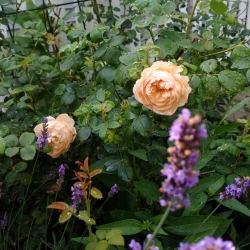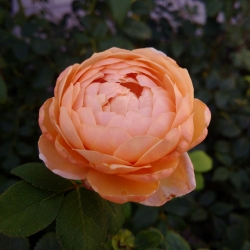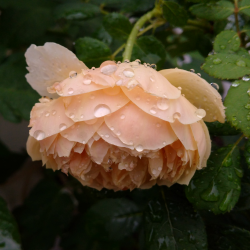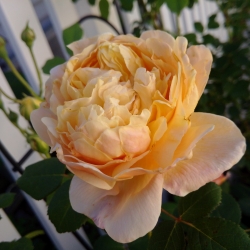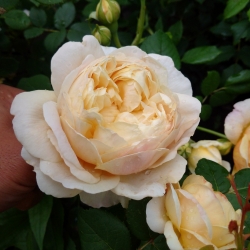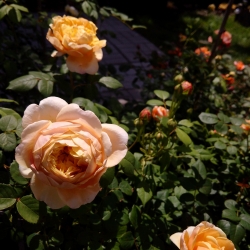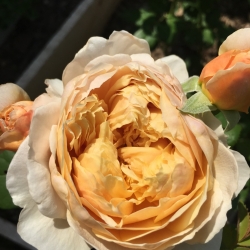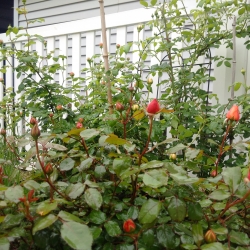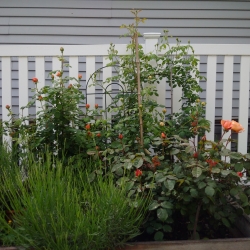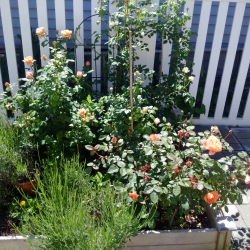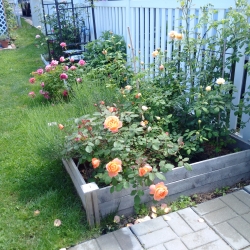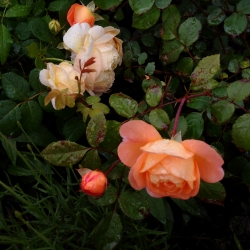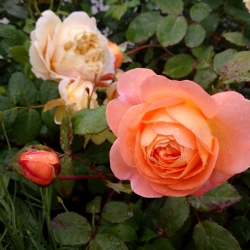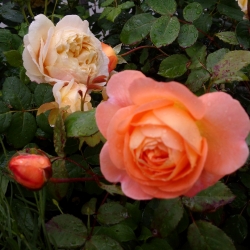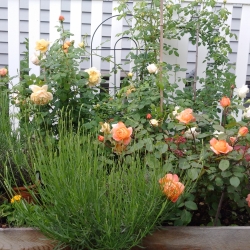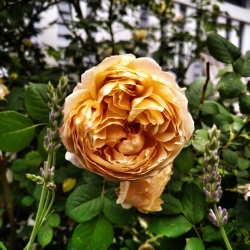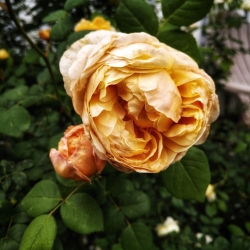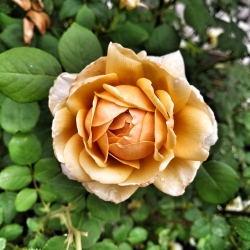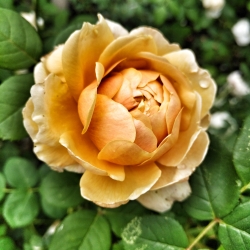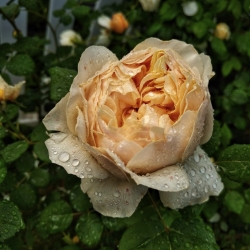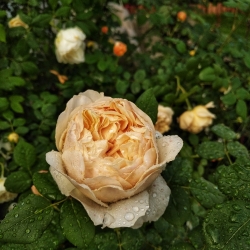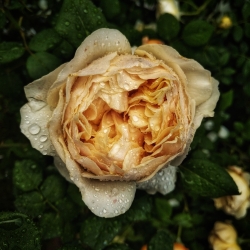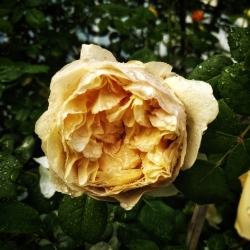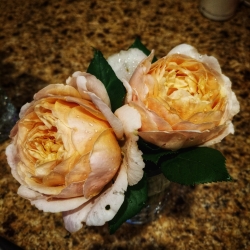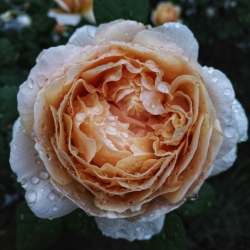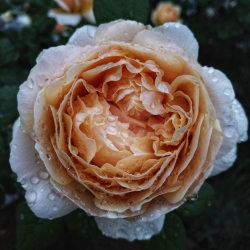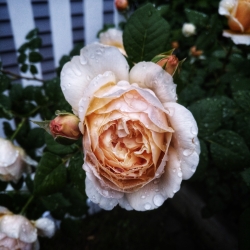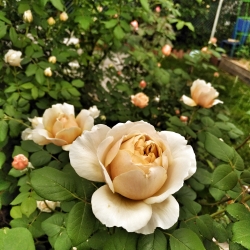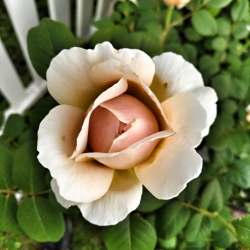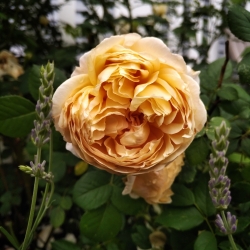 Darwin is in many ways my favorite of the entire collection — not because it is necessarily the “best” rose, but actually for what could almost be considered the reverse: it is among the most inconsistent, unpredicable specimens in my garden.
Darwin is in many ways my favorite of the entire collection — not because it is necessarily the “best” rose, but actually for what could almost be considered the reverse: it is among the most inconsistent, unpredicable specimens in my garden.
The color varies wildly. Most of its blooms start out from orange buds and open into an eerie, sometimes ghostly, virtually unphotographable metallic copper. This fades quickly, often while retaining the metallic tone, toward gold and eventually beige or even white. Occasionally, one will turn deep egg yolk yellow. Or platinum. Last season, two even shifted into a metallic pink range.
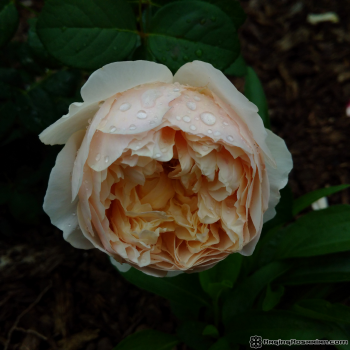 Form is completely inconsistent. This variety has given me the most perfectly symmetrical, quartered bloom of any rose in my garden… and it’s also given me blooms that were a chaotic burst of petals with no visible structure whatsoever.
Form is completely inconsistent. This variety has given me the most perfectly symmetrical, quartered bloom of any rose in my garden… and it’s also given me blooms that were a chaotic burst of petals with no visible structure whatsoever.
With scent, it is equally unpredictable. At its best, it’s a glorious, stunningly strong 50/50 mix of sweet green tea and candied lemon — think matcha-yuzu cake frosting stolen from a Japanese pastry shop and rushed to you by a very fast runner. In such moments, it simply possesses the most delicious scent of any plant I have experienced. And then there are rare, but deeply frustrating times when a bloom has almost no discernible scent whatsoever.
This is a vigorous variety, and yet it’s prone to serious blackspot. Without your vigilance, a hot and humid summer can leave it half defoliated (while the remaining leaves show more black than green). If it’s feeling floriferous, it will give you clusters of lush, heavy blooms. If it isn’t… well, better luck next year.
All this makes for an exciting plant with a tangible and intense personality — exceptionally pleasing and, at the same time, outright infuriating. As is the case with Siamese cats, I wish I had room for ten of them.
Pros:
- So much personality it feels as much a willful animal as it does a plant
- At its best, among the most mouth watering, delicious scents I’ve ever experienced from a plant
- Wild variation in color and form — never boring
- It often looks metallic!
Cons:
- Very blackspot prone
- Dislikes summer heat
- At its worst, little scent
- Wild variation in color and form

